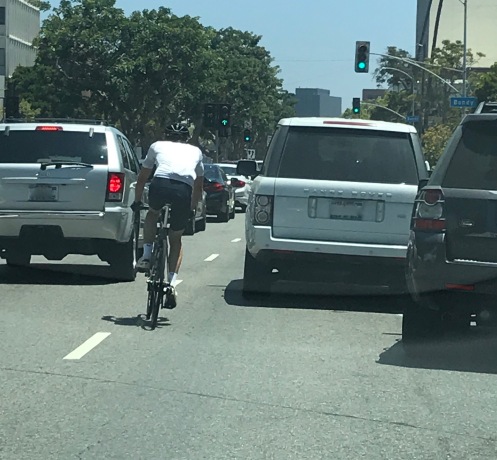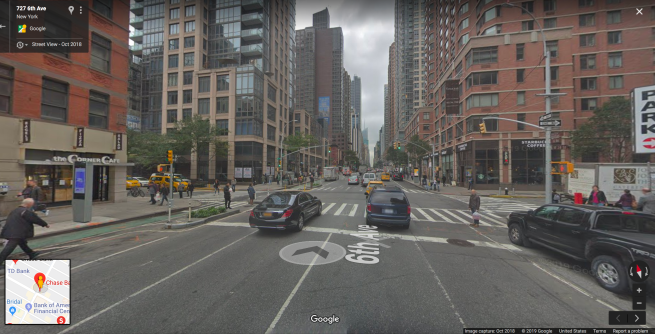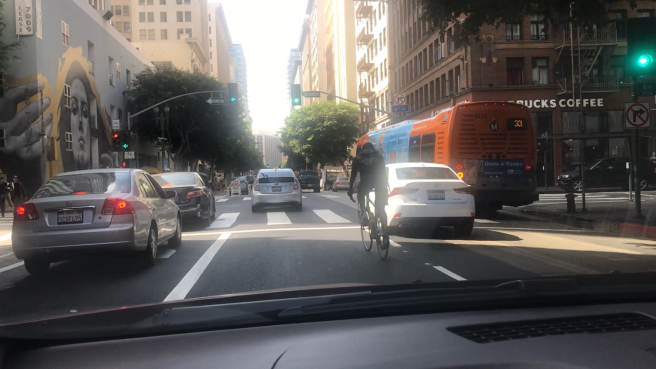human life promoted by the irresponsible bike culture in the Big Apple. Imbedded in this
truth telling piece is a video within a New York Post piece that shows Devra Freelander
being fatally struck by a truck in Brooklyn. R.I.P. Devra. The "False Green God" of the activists
admits no culpability for lawbreaking cyclists. The spate-epidemic-of reckless riding actively promoted by a small cult of advocate creates a high risk low reward environment. FOR ALL.
NO ONE BENEFITS FROM AN IRRESPONSIBLE BIKE CULTURE. NO ONE.
Where is the NYPD? Why was there NO sustained EFFORT to create a responsible bike culture? Why has the NYPD been kept on a short leash? Those who have funded and been serial sophists the bike zealotry-and those who have succumbed to the vociferous clamor seeking votes and political contributions are to blame. This bike zealotry is akin to the NRA-as presidential candidate Mayor Pete has said it's like praying to a false God. In the case of the irresponsible bike disruptors
it's a "False Green God."
journalism/law/muckraking
Bike lanes can’t save cyclists who won’t protect themselves

In Manhattan on June 24th, a 20-year-old bicycle messenger collided with a delivery truck in morning traffic. Robyn Hightman was riding in traffic when they* hit the truck from behind. The driver, who continued to drive several more blocks before being flagged by a taxi driver, claimed he never saw them.
The accident occurred near the intersection of Sixth Avenue (aka Avenue of the Americas) and 24th Street in Manhattan’s Chelsea district. Ironically, in response to pressure from bike activists, in 2016 the New York City Department of Transportation (DOT) installed a protected bike lane on Sixth Avenue between 8th and 33rd Streets. In December of that year Streetsblog NYC gushed that “the new protected bike lane on Sixth Avenue … has turned one of the city’s most stress-inducing bike routes into one of its best.”

The response to the accident was predictable to anyone familiar with bike activists and their radical agenda. Rather than using the tragedies of Freelander’s and Highman’s deaths as a teachable moment New York’s bike activists (all 37 of them) went into full outrage mode. Instead of taking a hard look at the circumstances, they raged about “reckless truck drivers,” “dangerous drivers,” and of course, “traffic violence.” These are the same cohorts who gleefully boast about bike rage, and howl about evil school bus drivers (seriously). They even claim to be an “oppressed class” (again, seriously).
In short, they do everything but take responsibility for their own lives.
Yet the simple fact is that cyclists often are their own worst enemies. They routinely blow through red lights and stop signs. They lane split in rush hour traffic while listening to music and checking texts. They ride the wrong way down one-way streets. They ride at night with no lights or reflective gear. They bait and taunt motorists. These are all incredibly risky actions yet they are the norm for far too many cyclists. If cyclists don’t take responsibility for their own safety, there’s little the rest of us can do. Indeed, in the name of speed and convenience many riders routinely ignore roadway features specifically intended to protect them.


Activists often point to confounding factors like cars, trucks, and buses parked illegally in bike lanes. They point out that some drivers are simply oblivious to bicycles and sometimes overtly hostile, with dangerous consequences. Those are valid points. Again, however, the law requires bicycle riders to observe the rules of the road. If a driver encounters a double-parked car, the solution isn’t to swerve into the oncoming lane without slowing down. Given their inherent vulnerability cyclists should be even more cautious. If they encounter a slower rider ahead of them they have to slow down themselves until it is safe to pass. These are the rules of the road.
Alas, a drive through most any downtown core these days involves navigating among a constant scrum of law breaking velocipedians. As bike lanes and other “bike infrastructure” proliferate nationwide, attitudes among cyclists have shifted from self preservation to privilege. Even though they comprise a vanishingly small proportion of road users (with the exception of few college towns no U.S. city has a bicycling rate higher than 4%), they wield outsize influence in city planning offices and even city halls. Groups like New York’s Transportation Alternatives are extremely well-funded and dominate the narrative over traffic safety. In their narrative, cyclists are never responsible for their own actions, much less their own safety.
If someone decides to drive drunk and ends up crashing into a tree and dying, we don’t blame the tree. Yet in every single cyclist death the activists blame everyone and everything but the cyclist, even when that cyclist flouted traffic laws intended to protect them.

The fact of the matter is, choosing to ride a bicycle is choosing to take certain risks. Cycling on city streets, particularly major thoroughfares, is an inherently dangerous act, one made inestimably more dangerous by many cyclists’ own conduct and decisions. When it comes down to it there’s nothing between a rider’s body and the pavement.
Unless and until the bike activists are willing to acknowledge so much as a scintilla of these realities people will continue dying on the streets.
- *Robyn Hightman went by the pronouns they/them.
No comments:
Post a Comment